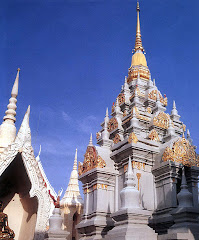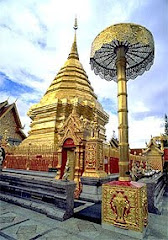 Towards the close of the nineteenth Buddhist century which witnessed the decline of Sukhothai kingdom, King U-thong of Suphunaphum, once under Sukhothai domination, proclaimed his state as independent of Sukhothai power and built up his capital at a town called Sri Ayutthaya, south of Sukhothai. This kingdom, which lasted 417 years, are ruled over by 33 kings.
Towards the close of the nineteenth Buddhist century which witnessed the decline of Sukhothai kingdom, King U-thong of Suphunaphum, once under Sukhothai domination, proclaimed his state as independent of Sukhothai power and built up his capital at a town called Sri Ayutthaya, south of Sukhothai. This kingdom, which lasted 417 years, are ruled over by 33 kings.
Through more than four centuries which marked the age of Ayutthaya kingdom, Theravada Buddhism in Thailand seemed to reach its zenith of popularity. Within and without the city of Ayutthaya there scattered innumerable temples and pagodas which served as places, thereby exerting a great influence on the spiritual life of the people. Buddhist art, both in the field of architecture and Buddha-image construction, were on the same line of flourishing. An illustrative example of this fact may be seen today in the temple of the Foot-Prints at Saraburi. There was also a tradition which is still in practice today for every Thai young man to be ordained at least once as a bhikkhu. Several kings such as Pra Borom Trai Lokanatha, the 18th king, in following the example set by King Li-Thai of Sukhothai period, had temporarily renounced his throne to be ordained as a bhikkhu.
Technorati tags : Ayutthaya Period /Ayutthaya /Buddhist /Sukhothai /Thailand Temple /thai temple









No comments:
Post a Comment